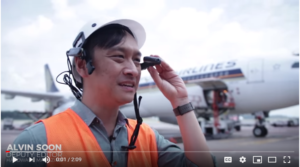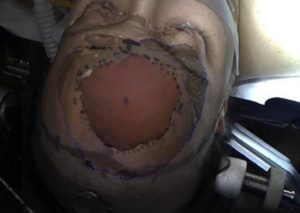The AR Management Platform is a new category of enterprise software aimed at meeting the biggest challenges facing business today, with the goal of empowering the 2.7 billion deskless workers that have been traditionally underserved by technology solutions. It is aimed squarely at helping enterprises tackle the velocity of business, product and technology change, the opportunities and challenges of advances in connectivity, the scarcity of resources and talent they face as well as the massive complexity of running large, at-scale operations.
Atheer says the key to meeting all of these challenges lies in technologies that empower frontline industrial workers with appropriate digital solutions. According to a recent study by Emergent Capital, the majority of the world’s workforce (in industries such as construction, manufacturing and agriculture) are the 2.7 billion “deskless” workers who have been “forgotten and overlooked by technology providers”.
In a new White Paper accompanying today’s announcement, Atheer underscores the vital role that an AR Management Platform can play in meeting the needs of these forgotten workers and how meeting their needs will provide the opportunity for a fundamental shift in the way industry works.
“Augmented Reality (AR) provides the answer to empowering that huge swath of the global workforce with a technology that will dramatically increase what they are able to accomplish at work – and improve the way they do so,” suggest the authors of the new White Paper (Bobby Yazdani, chairman of the board of Atheer, and Sanjog Gad, CEO of Atheer). “The new Augmented Reality Management Platform offers the promise of providing every member of the workforce with relevant, contextual, personalized information and guidance from across the enterprise into their field of view in a seamless, hands-free, intuitive manner that transforms the way they work.”
The AR Management Platform is also welcomed by industry analyst firm Aragon Research. “The Augmented Reality Management Platform, as pioneered by Atheer, marks an important milestone for Augmented Reality in the enterprise,” said Jim Lundy, Founder and CEO at Aragon Research. “Aragon believes that the advent of the Augmented Reality Management Platform (ARMP) will truly transform how enterprises – and the supply chains that work with them – run their business and support their workforces.”
Atheer CEO Sanjog Gad explained that this new platform definition is fundamental to the future development of Atheer. “The AR Management Platform is our guiding star,” he said. “We believe it offers so much promise and will be so vital to empowering the vast majority of the world’s industrial enterprises that we are making major investments in every part of our company to realize the full potential of this new software category. We can deliver many elements of that vision today and, with our own ongoing close collaboration with partners and customers, have dedicated ourselves to realizing its full potential.”
There are eight pillars to an AR Management Platform. It is device-agnostic, supports natural interactions, offers real-time ‘see what I see’ video, audio and text-based collaboration, digital asset management, offers contextual awareness, a predictive experience, performance analytics and is enterprise-ready.
Read the full press release to find out how Atheer sees the full 8 pillars being implemented.









